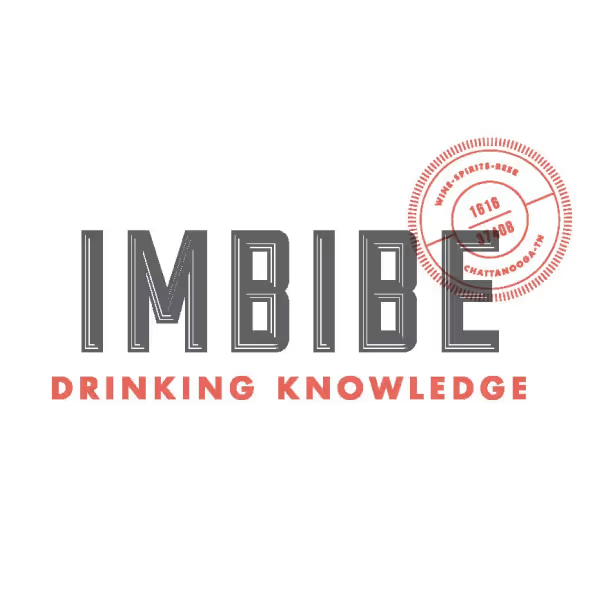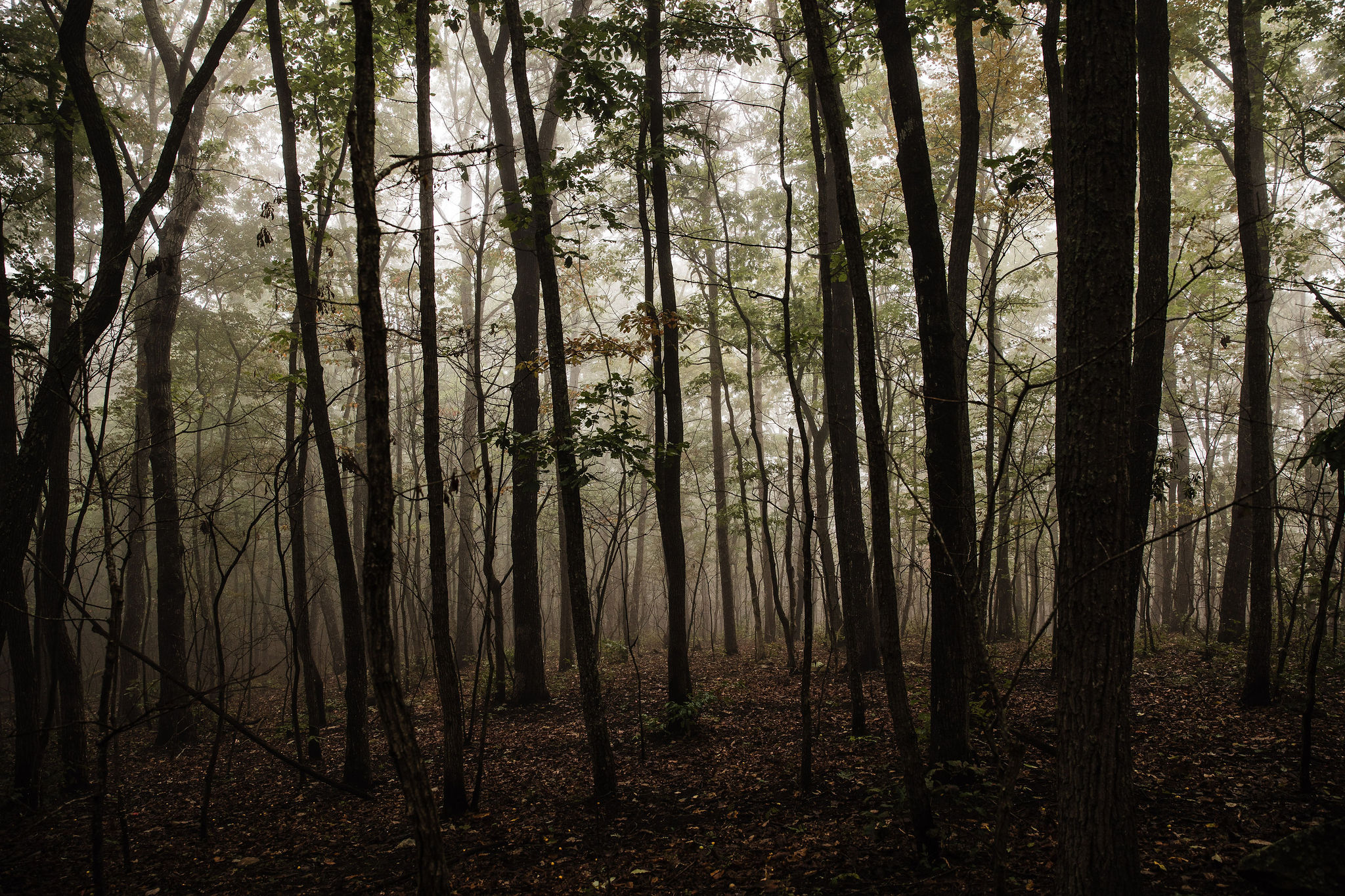
The Forests Before Us: Witness Trees and the True Value of Land
A story of values from the Appalachian carbon marketplace.
Food as a verb thanks
for sponsoring this series

This is the second in a multi-story partnership with Thrive Regional Partnership.
Our Before Us series examines our shared connection to the region's landscapes and spotlights the people preserving them for generations to come.

We are deep in a very deep part of these Lula Lake woods, bumping and bouncing down a dirt road so rutted that our Food as a Verb truck began groaning like a tight belt on Thanksgiving — yet we continued going deeper into a 2,100-acre forest held by the land trust on Lookout Mountain.
They've seen bears roaming these woods. And minks. Even a black coyote. It has that foggy, otherworld feel to it, as if Tolkien had written Appalachia.
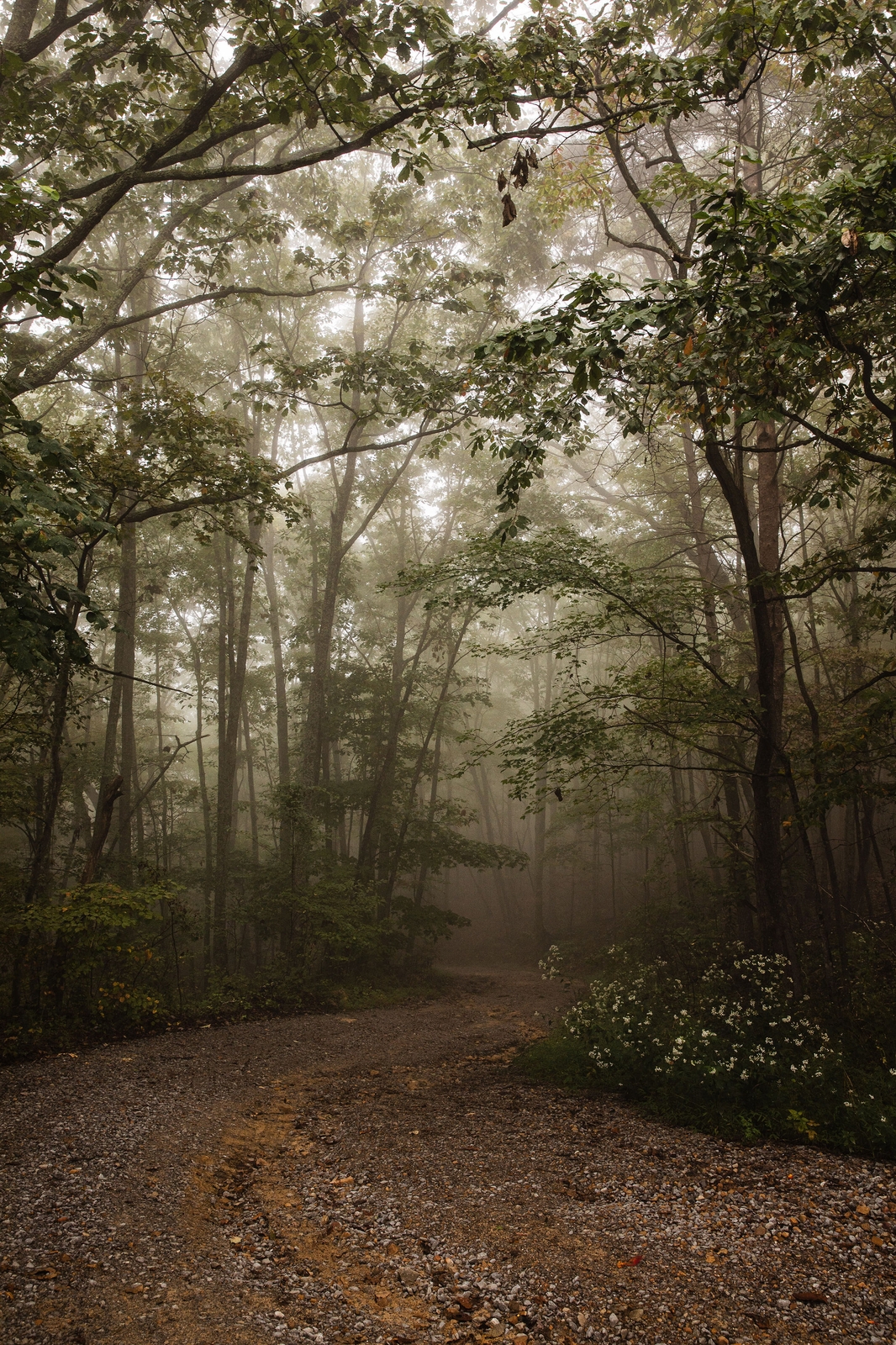
This is a protected forest, all this land stretching across Lookout Mountain.
Protected from clear-cut.
Protected from destruction.
Its protection is intimately tied to a unique ecosystem of relationships: a scrappy regional nonprofit, a flooring company in Dalton, a beloved land trust.
It's protected because of the carbon market.
"We're creating value," said Ongeleigh Underwood, executive director of Appalachian Carbon Exchange, or ACE.
Our truck can only go so far. We get out to hike, walking into a forest whose protection turns the land even more magical.
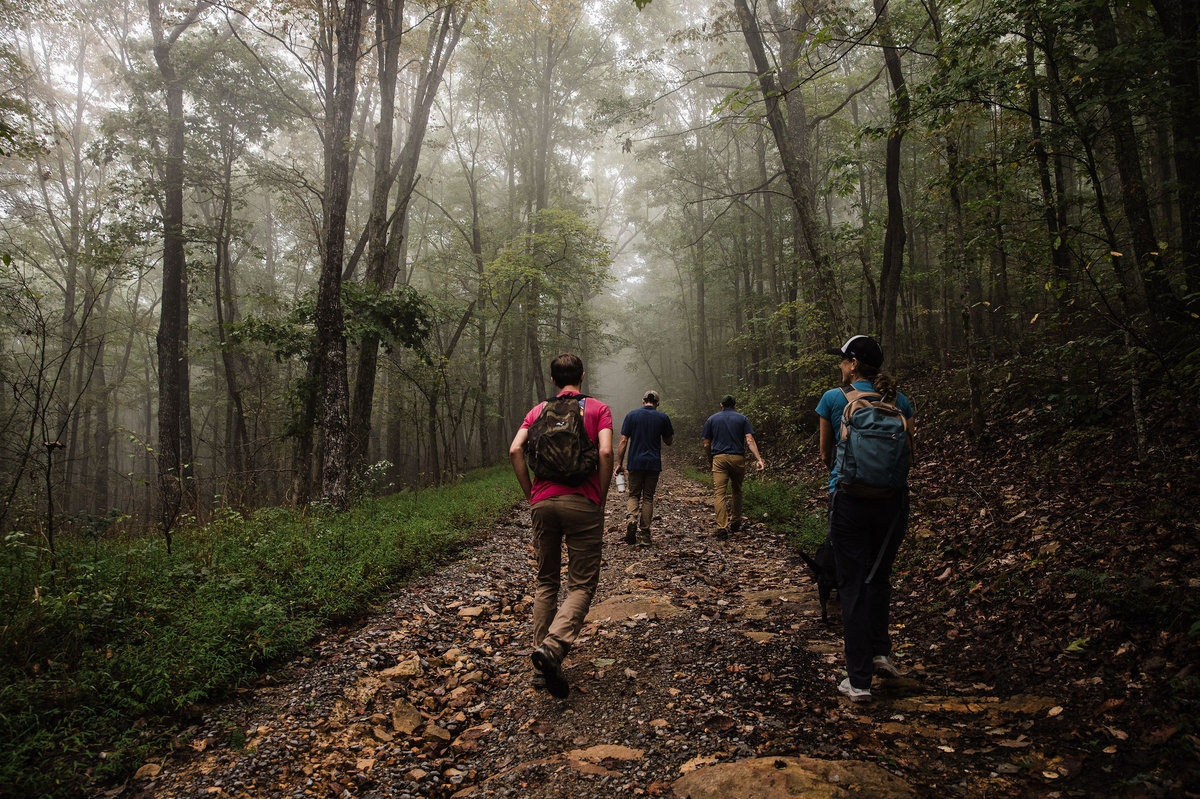
There, Aiden Campbell, a forester and ACE program director, begins to take stock. A fire burned these woods two years ago; he wants to see the volume of growth post-burn.
He takes a measuring tape and begins wrapping it chest-high around the trunk of the largest tree.
"A short leaf pine," he said. "It is our witness tree."
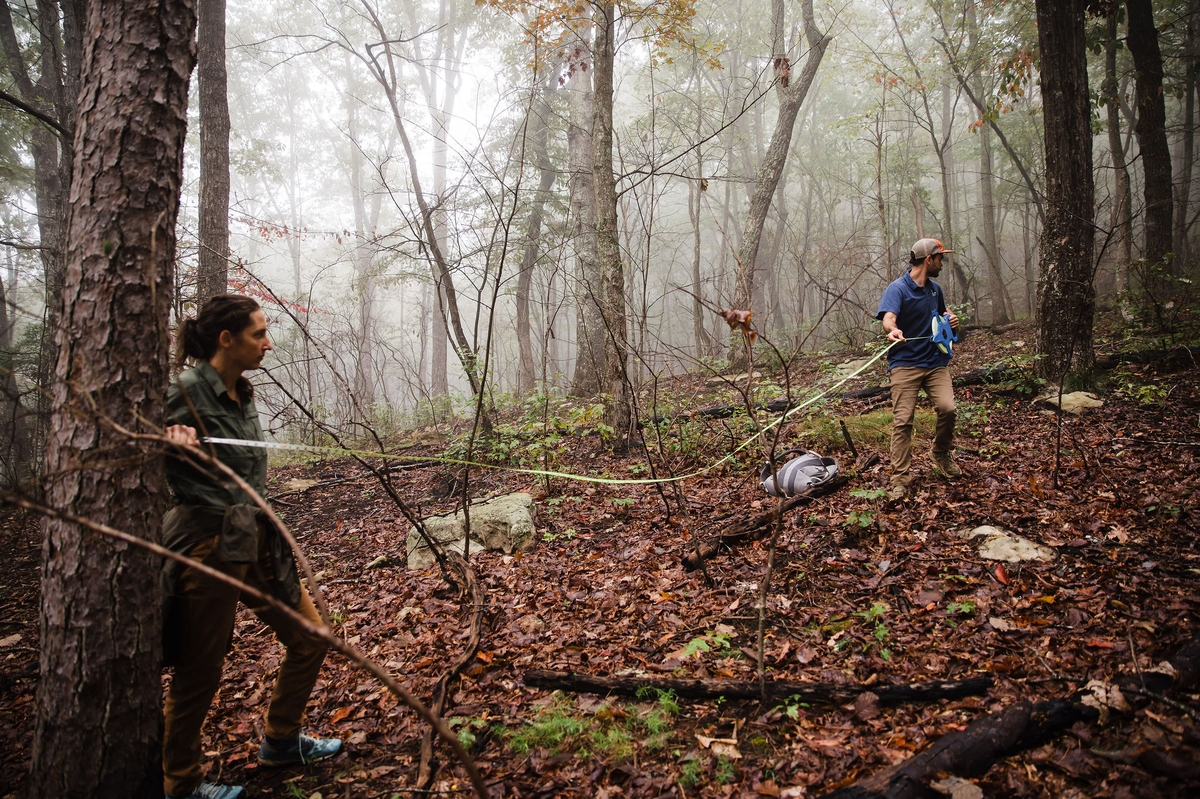
They begin to measure all the trees within a 35-foot radius, as this short leaf pine — the witness tree — stands as the central axis.

This witness tree becomes the central source from which all measuring takes place.
The measurements will help calculate forest growth two years after the fire, which was like a free prescribed burn.
In the language of forests, fire serves as a cleansing force, allowing future growth to occur.
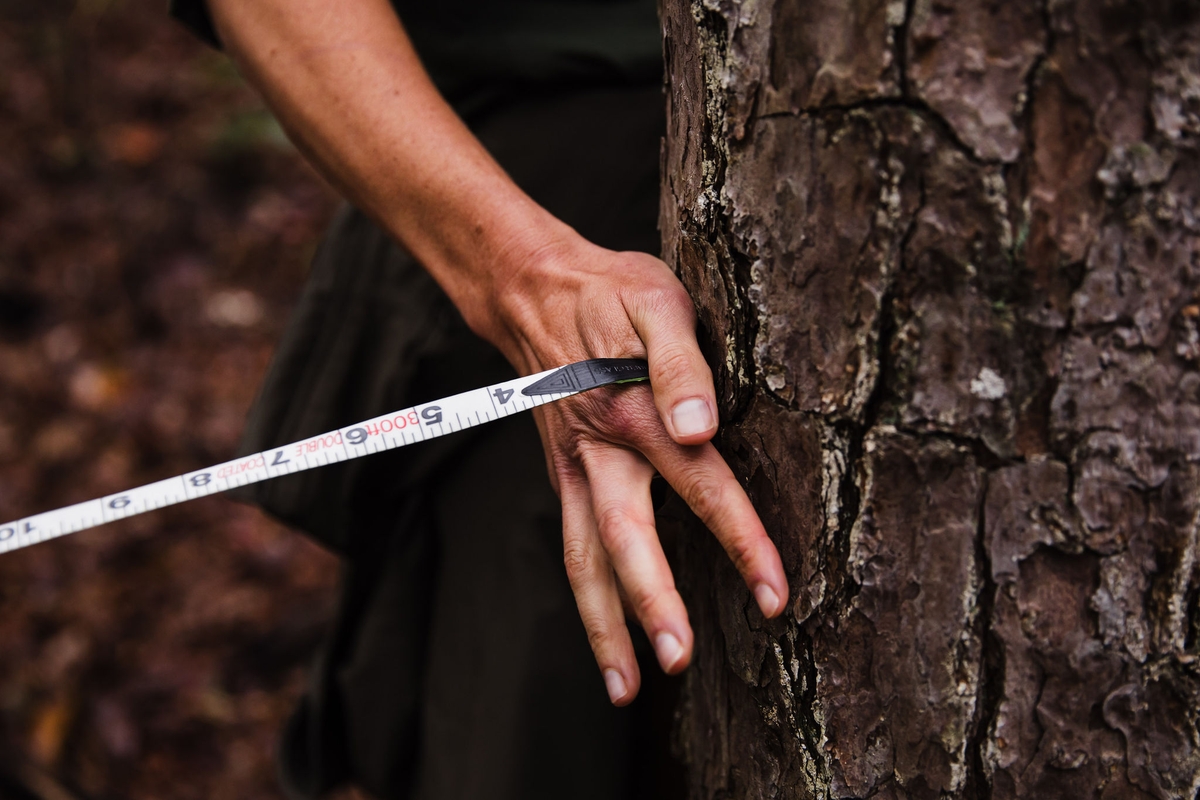
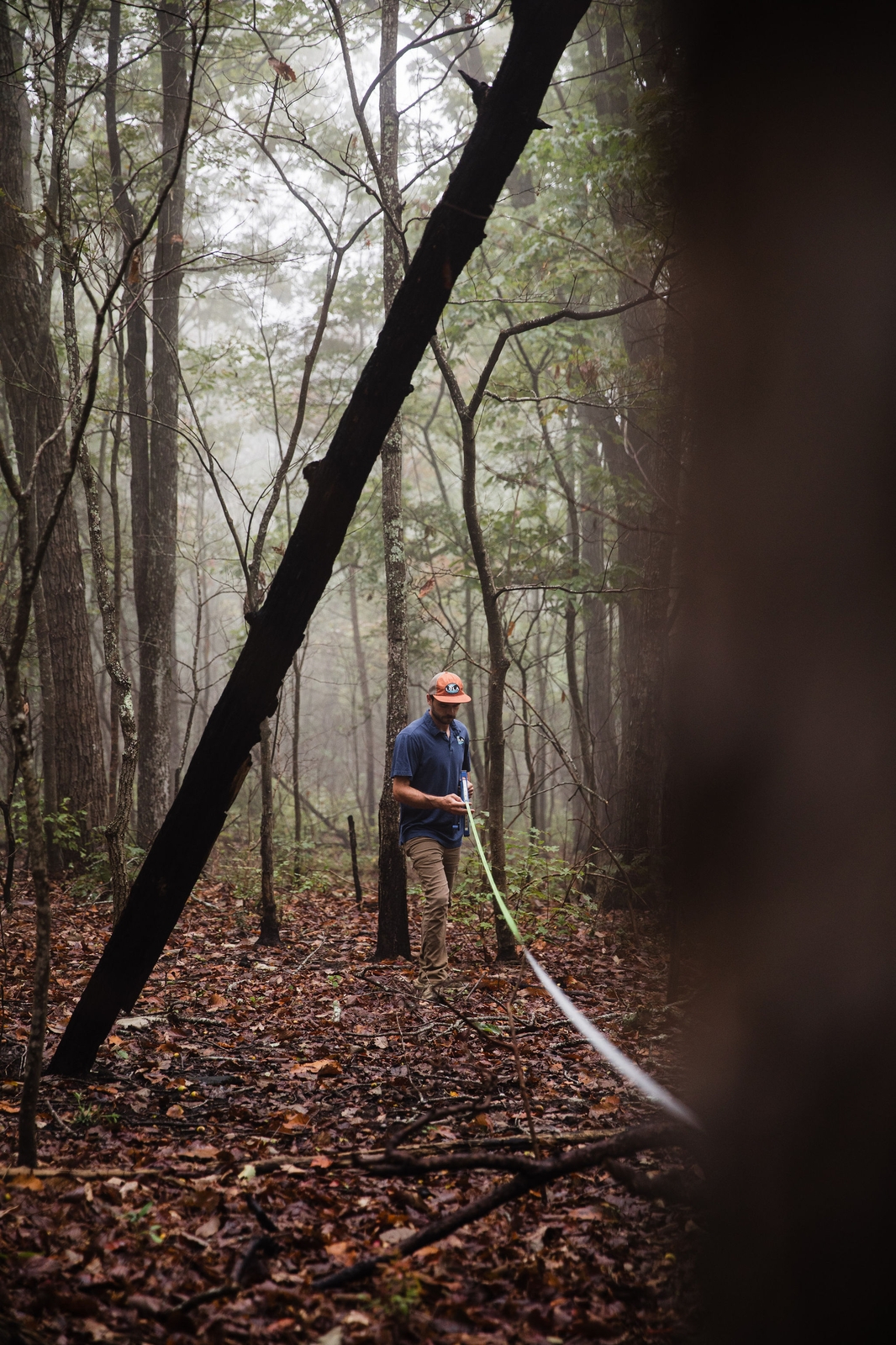
Aiden spreads out, measuring tree by tree, shouting out the feet-and-inches in the quiet woods.
"A Chestnut oak," he says, "Ten feet, five inches."
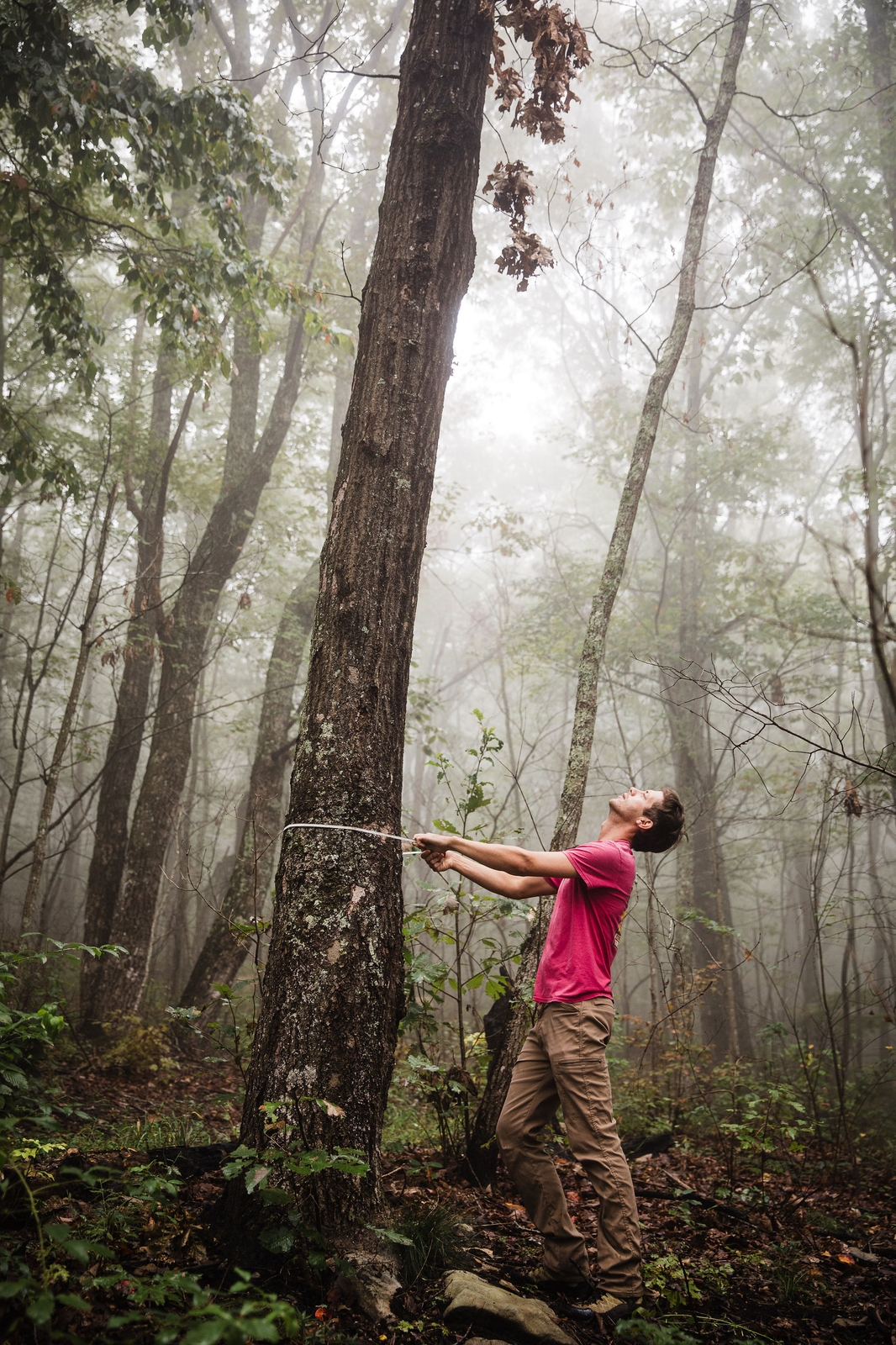
"Fourteen-four. Another Chestnut oak."
"Twelve-five. Is this a maple? Yes, red maple."
Squatting on the leafy ground, Ongeleigh, with a favorite Le Pen, records Aiden's measurements in her notebook.

It is calming, only the sound of the furled-then-unfurled measuring tape, raindrops on leaves, a dog being a dog in the woods.
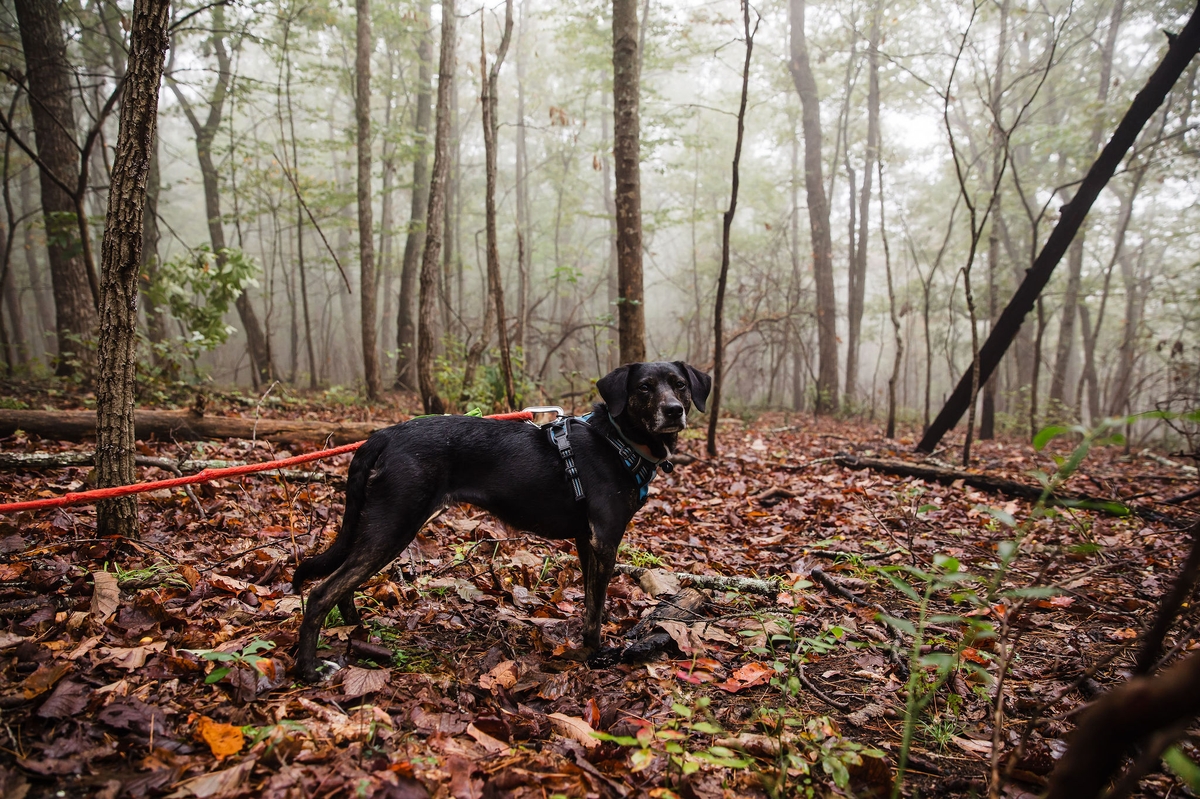
Look closer. The moment is both pioneering and powerful, as this group from ACE and Lula Lake is doing what culture and society can't quite yet.
They're valuing the forest for more than its ability to feed subdivisions and sawmills.
In our modern economy, a tree is worth more cut down than alive.
Yet in the Earth's economy, a tree — and forests — are among the most valuable of all living things.
How do we merge the Earth's economy of values with our human economy?
How can we see more clearly the true worth and value of our forests?

Nearby, capping her Le Pen, Ongeleigh has an answer.
"The carbon market," she said.
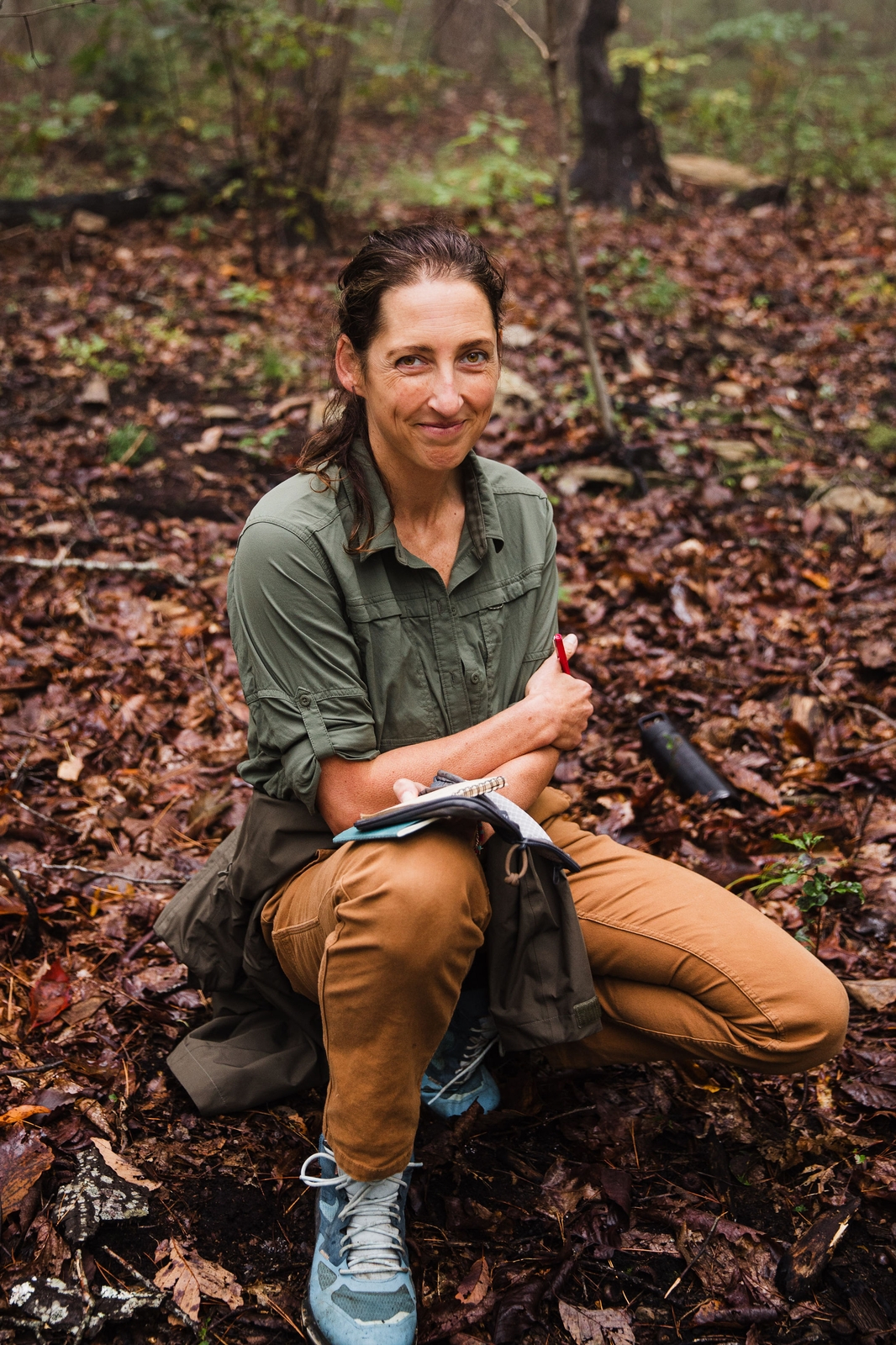
Launched in 2019, the Appalachian Carbon Exchange, or ACE, is a regional nonprofit ethically and intimately tied to the wellbeing of the Appalachian South.
It links buyers, or corporations, with sellers, or landowners, through the carbon marketplace.
Into a region with a hot mess of environmental problems, these relationships offer a welcome bounty of solutions:
- Companies interested in offsetting carbon emissions protect acres of Appalachian forests through financial investment.
- Landowners — who agree to forfeit their timber rights — receive regular payments for their untouched forested land.
- Farmland loss is mitigated.
- Forest loss is mitigated.
- ACE also trains future foresters through workforce development in a post-coal Appalachia.
"We use the carbon market as a tool to build value to the Appalachian landscape," Ongeleigh said. "We are focused on nature-based solutions that are value-driven for all parties — the farmer, the forest landowner and the carbon buyer.
"Using the financial system of trading carbon, we are able to quantify so much value for the land and the landowner."
ACE works closely with a certain type of landowner and corporation: discerning, genuine, in it for the right reasons.
Ongeleigh will spend hours talking on porches and walking through fields and barns. ACE becomes matchmaker, having enrolled some 20,000 acres in the carbon market program to date by building relationships.
The program offers an alternative for landowners, who are facing the double bind of needing revenue for land but not wanting to destroy it in the process.
Tennessee is losing farmland at a frightening rate: 10 acres every hour.
"We're losing forests in the same way," she said.
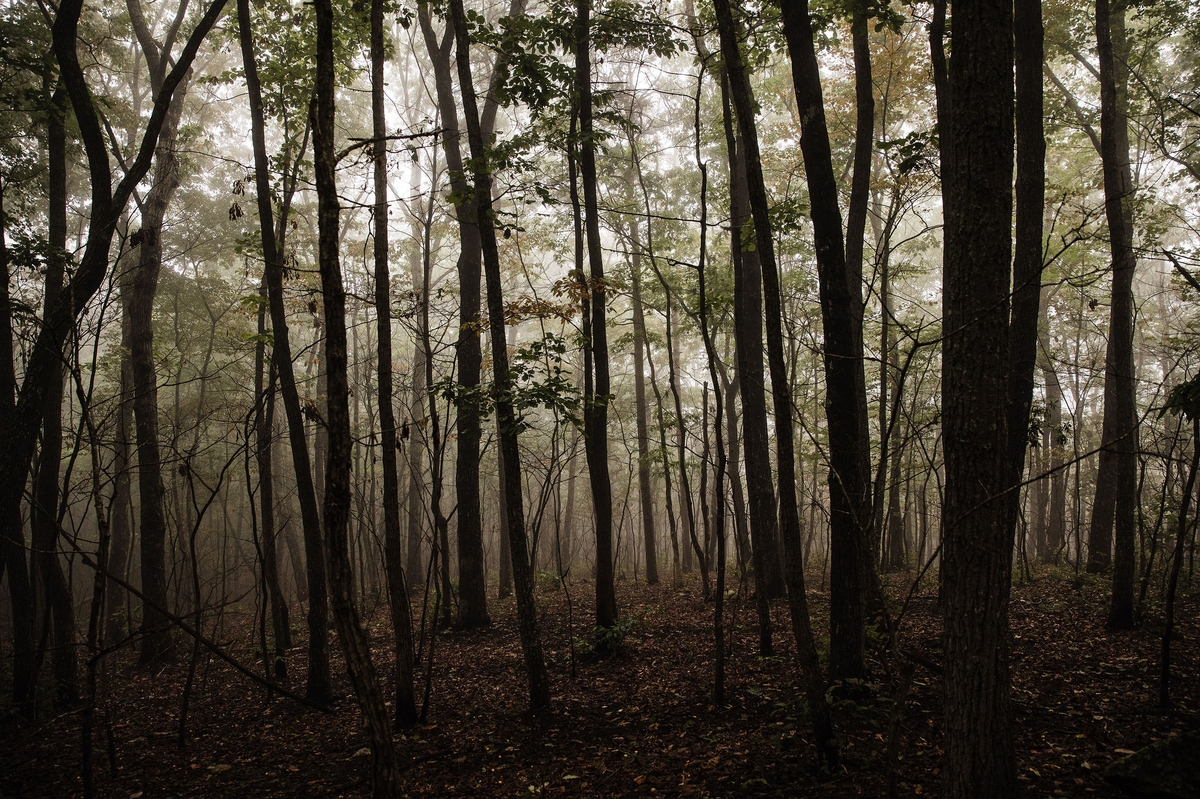
This forested Lula Lake land? It is protected via a multi-year contract purchased by Mannington, a fifth-generation, family-owned flooring company in Dalton, Georgia, which purchases carbon offsets by protected the Lula Lake forests whose carbon value has been determined by foresters.
"The numbers are confidential," said Shane Totten, Mannington's vice-president of sustainability, "but it is in excess of seven figures over five years."
Mannington originally created a pathway to carbon neutrality and carbon negative by buying 105% offsets to counter 100% emissions.
Then, rather bravely, they went beyond, not including the offsets as part of their annual emissions report. A lot of competitors claim products are carbon neutral, Shane said, through twists of accounting.
A protected forest captures and retains carbon. By placing value on that, ACE offers financial incentive for companies interested in reducing their environmental harm.
"We're doing this because it is an immediate investment in helping solve a crisis," he said.
Shane, a nonvoting member of the ACE board, has spent many hours with Ongeleigh discussing impact and effectiveness. He says Mannington's commitment to ACE influenced company culture.
"Something the company can be proud of," said Shane.
And Lula Lake Land Trust receives revenue for keeping its forests wild, untouched and protected.
"This is one of the most isolated wildernesses we have," said Cody Roney.

Cody is the executive director of the beloved 31-year old land trust that covers across Lookout Mountain, Georgia.
With 4,500 acres under ownership, Lula Lake has also helped protect 8,000 acres, with its 2,100-acre forest — the Tolkien-esque bears-and-black-coyote-forest — enrolled in the ACE carbon project.
"As a small nonprofit, we weren't able to afford protecting this land through traditional easement processes," she said. "But now, we are seeing large housing developments happening here, close to this property that locals — even five years ago — would have never anticipated because the area is so rural and remote.
"Well, they are happening," she said, "and they show no signs of slowing."
As an ACE partner and the recipient of Mannington's investment, Lula Lake uses the carbon revenue to further conserve other holdings.
It all began with a conversation.
In 2019, Cody was in a meeting with Thrive Regional Partnership. Quietly, she'd been considering the carbon market before, but was hesitant: weren't carbon markets just cheap outs for oil and gas companies to bypass doing the right thing?
Then, someone from the ACE began to speak. Cody realized she was witnessing the early birth of a relationship-based nonprofit focused on Appalachia, not some faraway marketplace.
Soon, Cody and Ongeleigh became friends. Both are tremendous spokeswomen, each carrying a wise and seasoned stamina of a energy that is inviting, engaging, grounded.
Across Appalachia, ACE got to work. It looks like this:
Foresters and carbon verifiers determine an estimated value of a land parcel.
Corporate partners are invited to participate and invest.
Farmers or landowners receive a regular dividend check.
Land formerly valued economically only as potential timber now becomes valuable because the trees remain. Plus, ACE returns regularly to help landowners sustainably manage their forested land against threats.
The tables get turned.
"It's going to allow me as a landowner to keep my land for the next generations to enjoy," said one Tennessee farmer.
He owns a few hundred acres in middle Tennessee. Pays four figures in property taxes. Runs cattle, but much of the land is forest.
There is temptation: a sawmill owner estimated $275,000 in profit. He gets a call once a week from developers: this is prime bluff-view, they remind him.
"I could be a millionaire," he said. "An absolute millionaire."
He says no. Keeps saying no. Not no, but hell no.
"I'm a country kid. Always have been. My kids are country kids," he said. "If we sold this land, we're done. My kids are done, my grandkids are done."
He works two separate off-farm jobs to pay the bills. Thanks to ACE, he'll now begin receiving a carbon revenue check, allowing him to earn revenue while keeping his forests untouched.
"Now, it's not a dead asset," he said. "I can afford to keep it."
His intact high-elevation forest also prevents flooding in lower communities, creating a string of direct and indirect benefits.
Not everyone would make this decision.
"You're damn right," he said. "If I didn't own it, it would be clear cut, I promise you."
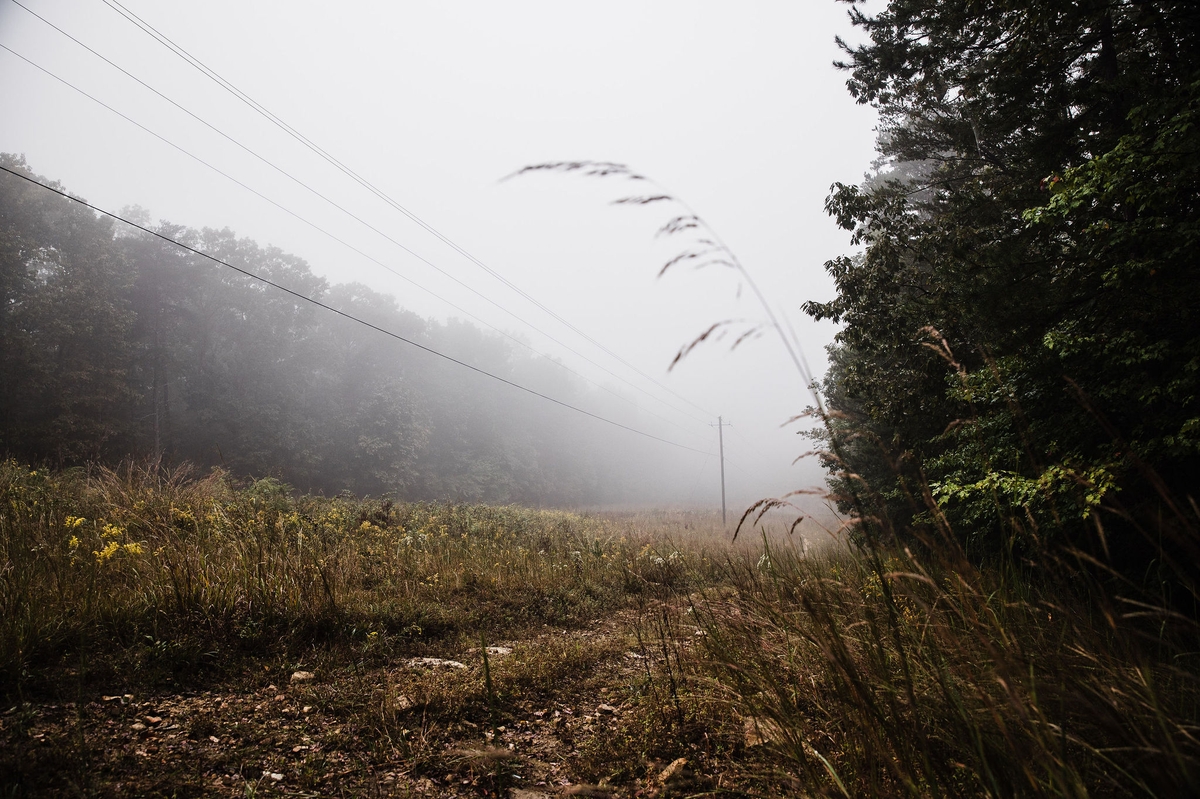
Back in the Tolkien-witness-tree forest, Aiden continues to tape-measure the surrounding trees, as members of the ACE and Lula Lake team articulate answers to this guiding question:
What is the value of this forest?
How do we measure its worth?
"You can tear down a home and build one back. But when you take down a 200-year old tree, it's gone," said Cody. "Much of this forest will outlive us if we let it.
"But if we take it all down, there's no coming back."
On this property, there are plants only found here and nowhere else in Georgia ... or the world. The Lula Lake forests serve as a generous, expansive wildlife corridor — bears, black coyotes, minks — while keeping watersheds at highest levels clean and pure.
Plus, the view.
Wherever you are, imagine Lookout Mountain's mountainscape no longer green and forested but roaded, clear-cut, subdivided.
So much of our iconic outdoor image would be devastated; how many photos with a forested Lookout blanket our marketing and identity?
Without active conservation and preservation, there are no guarantees that forests won't be cut.
And if cut?
"It would not ever regenerate the way it looks now," said Aiden.
The soil chemistry is different, he said. The heat in the atmosphere is different. A changing climate would facilitate the growth of life that would be different than 100 or 50 years ago.
So to protect and value forested land is to protect and value stability over chaos, life over short-term profit.
And where there's life?
"There's hope," Tolkien wrote.
"There are the unquantifiable benefits of carbon projects," said Ongeleigh. "We view the market as a tool for all these other things to be valued."
We leave the forest for the bluff; climbing higher up the mountain, the road becoming even less so, as we finally reached the tip-top of Lookout, peer over and ...
Nothing.
The fog blanketed it all.
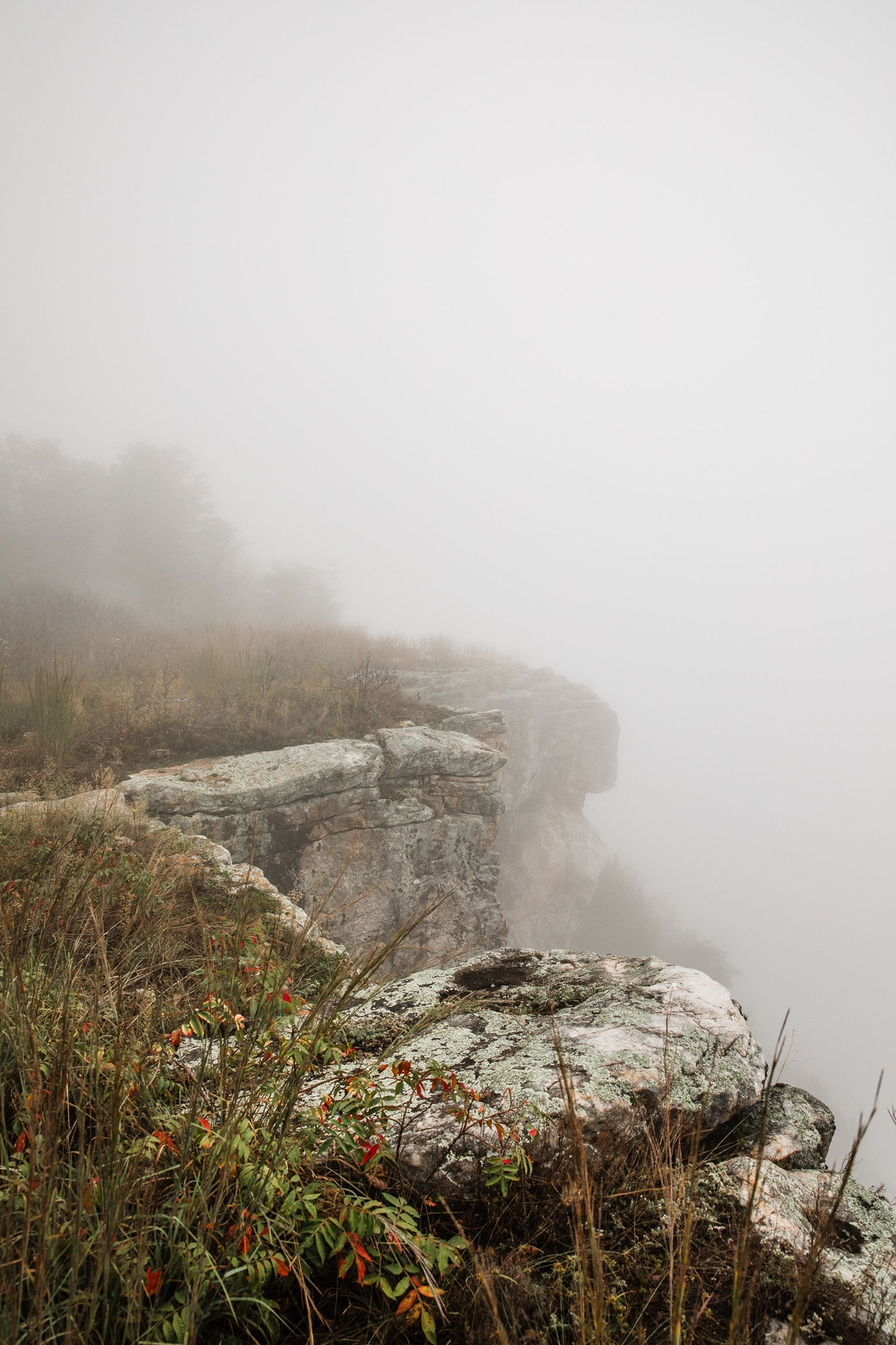
Strangely, the fogginess seemed fitting, a soft symbol for the urgency we face:
How can we see more clearly the value of forests before us?
How can we create a new, illuminating path out of the fog of a society and economy that runs on consuming the very things that make us whole?
There at the mountaintop, there was fog.
But there was also clarity. We could ... see.
Nonprofits working together. Foresters articulating value. Family-owned businesses investing in the present and future health of our lands, forests and communities.
Relationships growing like trees in a forest.

And together, these people — like trees and forests — merge together, changing the way we see and value the land. We begin to measure worth differently because of them.
They become our witness trees.
"These are globally unique ecosystems," said Shane, with Mannington.
"There are plants and animals living there for millions of years in such incredibly small ranges of land, like a quarter of a square mile," he continued.
"You get more than carbon offsets. You get stability, investments, stewardship of resources that create a future we want our kids to have and experience," he said.
"That's when you know you're making a right decision. You do something and it multi-solves. It creates benefits across a range of problems you weren't even starting out to address."

Story ideas, questions, feedback? Interested in partnering with us? Email: david@foodasaverb.com
This story is 100% human generated; no AI chatbot was used in the creation of this content.
The Forests Before Us is the second in a multi-part series examining the crucial role of larger landscapes within our region. In a special collaboration with Thrive Regional Partnership, Food as a Verb is expanding our coverage with a question:
What is the health of the watersheds and forests in the background beyond our farms and fields?
And what are the opportunities before us for healing?
For more information:
- Lula Lake Land Trust is a 31-year old land trust "dedicated to the preservation of lands located within the Rock Creek watershed on Lookout Mountain, the mission of LLLT is to preserve the natural and historic landscapes surrounding Rock Creek and its tributaries through conservation, education, and low-impact recreation."
- Appalachian Carbon Exchange is "a non-profit that works with landowners in Kentucky, West Virginia, Virginia, North Carolina, Tennessee, and Georgia to create a lasting legacy through long term land management support."
- Thrive Regional Partnership serves as a framework, connecting people to place in a wide network of relationships to inspire responsible growth in northeast Alabama, northwest Georgia and southeast Tennessee.
- Thrive's Natural Treasures Alliance is a collective of organizations working to accelerate landscape conservation to ensure a place that lasts for future generations.
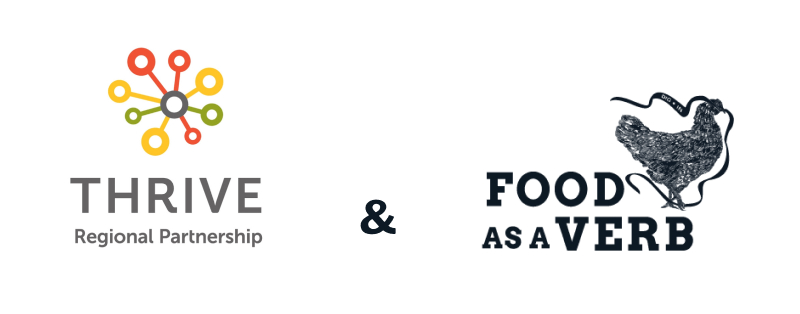
This is the second in a multi-story partnership with Thrive Regional Partnership.
Our Before Us series examines our shared connection to the region's landscapes and spotlights the people preserving them for generations to come.

We are deep in a very deep part of these Lula Lake woods, bumping and bouncing down a dirt road so rutted that our Food as a Verb truck began groaning like a tight belt on Thanksgiving — yet we continued going deeper into a 2,100-acre forest held by the land trust on Lookout Mountain.
They've seen bears roaming these woods. And minks. Even a black coyote. It has that foggy, otherworld feel to it, as if Tolkien had written Appalachia.

This is a protected forest, all this land stretching across Lookout Mountain.
Protected from clear-cut.
Protected from destruction.
Its protection is intimately tied to a unique ecosystem of relationships: a scrappy regional nonprofit, a flooring company in Dalton, a beloved land trust.
It's protected because of the carbon market.
"We're creating value," said Ongeleigh Underwood, executive director of Appalachian Carbon Exchange, or ACE.
Our truck can only go so far. We get out to hike, walking into a forest whose protection turns the land even more magical.

There, Aiden Campbell, a forester and ACE program director, begins to take stock. A fire burned these woods two years ago; he wants to see the volume of growth post-burn.
He takes a measuring tape and begins wrapping it chest-high around the trunk of the largest tree.
"A short leaf pine," he said. "It is our witness tree."

They begin to measure all the trees within a 35-foot radius, as this short leaf pine — the witness tree — stands as the central axis.

This witness tree becomes the central source from which all measuring takes place.
The measurements will help calculate forest growth two years after the fire, which was like a free prescribed burn.
In the language of forests, fire serves as a cleansing force, allowing future growth to occur.


Aiden spreads out, measuring tree by tree, shouting out the feet-and-inches in the quiet woods.
"A Chestnut oak," he says, "Ten feet, five inches."

"Fourteen-four. Another Chestnut oak."
"Twelve-five. Is this a maple? Yes, red maple."
Squatting on the leafy ground, Ongeleigh, with a favorite Le Pen, records Aiden's measurements in her notebook.

It is calming, only the sound of the furled-then-unfurled measuring tape, raindrops on leaves, a dog being a dog in the woods.

Look closer. The moment is both pioneering and powerful, as this group from ACE and Lula Lake is doing what culture and society can't quite yet.
They're valuing the forest for more than its ability to feed subdivisions and sawmills.
In our modern economy, a tree is worth more cut down than alive.
Yet in the Earth's economy, a tree — and forests — are among the most valuable of all living things.
How do we merge the Earth's economy of values with our human economy?
How can we see more clearly the true worth and value of our forests?

Nearby, capping her Le Pen, Ongeleigh has an answer.
"The carbon market," she said.

Launched in 2019, the Appalachian Carbon Exchange, or ACE, is a regional nonprofit ethically and intimately tied to the wellbeing of the Appalachian South.
It links buyers, or corporations, with sellers, or landowners, through the carbon marketplace.
Into a region with a hot mess of environmental problems, these relationships offer a welcome bounty of solutions:
- Companies interested in offsetting carbon emissions protect acres of Appalachian forests through financial investment.
- Landowners — who agree to forfeit their timber rights — receive regular payments for their untouched forested land.
- Farmland loss is mitigated.
- Forest loss is mitigated.
- ACE also trains future foresters through workforce development in a post-coal Appalachia.
"We use the carbon market as a tool to build value to the Appalachian landscape," Ongeleigh said. "We are focused on nature-based solutions that are value-driven for all parties — the farmer, the forest landowner and the carbon buyer.
"Using the financial system of trading carbon, we are able to quantify so much value for the land and the landowner."
ACE works closely with a certain type of landowner and corporation: discerning, genuine, in it for the right reasons.
Ongeleigh will spend hours talking on porches and walking through fields and barns. ACE becomes matchmaker, having enrolled some 20,000 acres in the carbon market program to date by building relationships.
The program offers an alternative for landowners, who are facing the double bind of needing revenue for land but not wanting to destroy it in the process.
Tennessee is losing farmland at a frightening rate: 10 acres every hour.
"We're losing forests in the same way," she said.

This forested Lula Lake land? It is protected via a multi-year contract purchased by Mannington, a fifth-generation, family-owned flooring company in Dalton, Georgia, which purchases carbon offsets by protected the Lula Lake forests whose carbon value has been determined by foresters.
"The numbers are confidential," said Shane Totten, Mannington's vice-president of sustainability, "but it is in excess of seven figures over five years."
Mannington originally created a pathway to carbon neutrality and carbon negative by buying 105% offsets to counter 100% emissions.
Then, rather bravely, they went beyond, not including the offsets as part of their annual emissions report. A lot of competitors claim products are carbon neutral, Shane said, through twists of accounting.
A protected forest captures and retains carbon. By placing value on that, ACE offers financial incentive for companies interested in reducing their environmental harm.
"We're doing this because it is an immediate investment in helping solve a crisis," he said.
Shane, a nonvoting member of the ACE board, has spent many hours with Ongeleigh discussing impact and effectiveness. He says Mannington's commitment to ACE influenced company culture.
"Something the company can be proud of," said Shane.
And Lula Lake Land Trust receives revenue for keeping its forests wild, untouched and protected.
"This is one of the most isolated wildernesses we have," said Cody Roney.

Cody is the executive director of the beloved 31-year old land trust that covers across Lookout Mountain, Georgia.
With 4,500 acres under ownership, Lula Lake has also helped protect 8,000 acres, with its 2,100-acre forest — the Tolkien-esque bears-and-black-coyote-forest — enrolled in the ACE carbon project.
"As a small nonprofit, we weren't able to afford protecting this land through traditional easement processes," she said. "But now, we are seeing large housing developments happening here, close to this property that locals — even five years ago — would have never anticipated because the area is so rural and remote.
"Well, they are happening," she said, "and they show no signs of slowing."
As an ACE partner and the recipient of Mannington's investment, Lula Lake uses the carbon revenue to further conserve other holdings.
It all began with a conversation.
In 2019, Cody was in a meeting with Thrive Regional Partnership. Quietly, she'd been considering the carbon market before, but was hesitant: weren't carbon markets just cheap outs for oil and gas companies to bypass doing the right thing?
Then, someone from the ACE began to speak. Cody realized she was witnessing the early birth of a relationship-based nonprofit focused on Appalachia, not some faraway marketplace.
Soon, Cody and Ongeleigh became friends. Both are tremendous spokeswomen, each carrying a wise and seasoned stamina of a energy that is inviting, engaging, grounded.
Across Appalachia, ACE got to work. It looks like this:
Foresters and carbon verifiers determine an estimated value of a land parcel.
Corporate partners are invited to participate and invest.
Farmers or landowners receive a regular dividend check.
Land formerly valued economically only as potential timber now becomes valuable because the trees remain. Plus, ACE returns regularly to help landowners sustainably manage their forested land against threats.
The tables get turned.
"It's going to allow me as a landowner to keep my land for the next generations to enjoy," said one Tennessee farmer.
He owns a few hundred acres in middle Tennessee. Pays four figures in property taxes. Runs cattle, but much of the land is forest.
There is temptation: a sawmill owner estimated $275,000 in profit. He gets a call once a week from developers: this is prime bluff-view, they remind him.
"I could be a millionaire," he said. "An absolute millionaire."
He says no. Keeps saying no. Not no, but hell no.
"I'm a country kid. Always have been. My kids are country kids," he said. "If we sold this land, we're done. My kids are done, my grandkids are done."
He works two separate off-farm jobs to pay the bills. Thanks to ACE, he'll now begin receiving a carbon revenue check, allowing him to earn revenue while keeping his forests untouched.
"Now, it's not a dead asset," he said. "I can afford to keep it."
His intact high-elevation forest also prevents flooding in lower communities, creating a string of direct and indirect benefits.
Not everyone would make this decision.
"You're damn right," he said. "If I didn't own it, it would be clear cut, I promise you."

Back in the Tolkien-witness-tree forest, Aiden continues to tape-measure the surrounding trees, as members of the ACE and Lula Lake team articulate answers to this guiding question:
What is the value of this forest?
How do we measure its worth?
"You can tear down a home and build one back. But when you take down a 200-year old tree, it's gone," said Cody. "Much of this forest will outlive us if we let it.
"But if we take it all down, there's no coming back."
On this property, there are plants only found here and nowhere else in Georgia ... or the world. The Lula Lake forests serve as a generous, expansive wildlife corridor — bears, black coyotes, minks — while keeping watersheds at highest levels clean and pure.
Plus, the view.
Wherever you are, imagine Lookout Mountain's mountainscape no longer green and forested but roaded, clear-cut, subdivided.
So much of our iconic outdoor image would be devastated; how many photos with a forested Lookout blanket our marketing and identity?
Without active conservation and preservation, there are no guarantees that forests won't be cut.
And if cut?
"It would not ever regenerate the way it looks now," said Aiden.
The soil chemistry is different, he said. The heat in the atmosphere is different. A changing climate would facilitate the growth of life that would be different than 100 or 50 years ago.
So to protect and value forested land is to protect and value stability over chaos, life over short-term profit.
And where there's life?
"There's hope," Tolkien wrote.
"There are the unquantifiable benefits of carbon projects," said Ongeleigh. "We view the market as a tool for all these other things to be valued."
We leave the forest for the bluff; climbing higher up the mountain, the road becoming even less so, as we finally reached the tip-top of Lookout, peer over and ...
Nothing.
The fog blanketed it all.

Strangely, the fogginess seemed fitting, a soft symbol for the urgency we face:
How can we see more clearly the value of forests before us?
How can we create a new, illuminating path out of the fog of a society and economy that runs on consuming the very things that make us whole?
There at the mountaintop, there was fog.
But there was also clarity. We could ... see.
Nonprofits working together. Foresters articulating value. Family-owned businesses investing in the present and future health of our lands, forests and communities.
Relationships growing like trees in a forest.

And together, these people — like trees and forests — merge together, changing the way we see and value the land. We begin to measure worth differently because of them.
They become our witness trees.
"These are globally unique ecosystems," said Shane, with Mannington.
"There are plants and animals living there for millions of years in such incredibly small ranges of land, like a quarter of a square mile," he continued.
"You get more than carbon offsets. You get stability, investments, stewardship of resources that create a future we want our kids to have and experience," he said.
"That's when you know you're making a right decision. You do something and it multi-solves. It creates benefits across a range of problems you weren't even starting out to address."

Story ideas, questions, feedback? Interested in partnering with us? Email: david@foodasaverb.com
This story is 100% human generated; no AI chatbot was used in the creation of this content.
The Forests Before Us is the second in a multi-part series examining the crucial role of larger landscapes within our region. In a special collaboration with Thrive Regional Partnership, Food as a Verb is expanding our coverage with a question:
What is the health of the watersheds and forests in the background beyond our farms and fields?
And what are the opportunities before us for healing?
For more information:
- Lula Lake Land Trust is a 31-year old land trust "dedicated to the preservation of lands located within the Rock Creek watershed on Lookout Mountain, the mission of LLLT is to preserve the natural and historic landscapes surrounding Rock Creek and its tributaries through conservation, education, and low-impact recreation."
- Appalachian Carbon Exchange is "a non-profit that works with landowners in Kentucky, West Virginia, Virginia, North Carolina, Tennessee, and Georgia to create a lasting legacy through long term land management support."
- Thrive Regional Partnership serves as a framework, connecting people to place in a wide network of relationships to inspire responsible growth in northeast Alabama, northwest Georgia and southeast Tennessee.
- Thrive's Natural Treasures Alliance is a collective of organizations working to accelerate landscape conservation to ensure a place that lasts for future generations.









